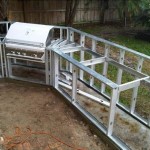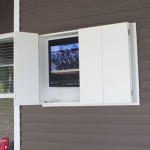Outdoor Shooting Range Design Standards
Outdoor shooting ranges are essential facilities for recreational shooting, law enforcement training, and military practice. These ranges provide a controlled environment for safe and responsible firearm use, ensuring the safety of participants and the surrounding community. Effective design is crucial to achieving these objectives. Implementing proper design standards helps guarantee security, minimize environmental impact, and facilitate the creation of a high-quality shooting experience. However, there are numerous factors to consider when designing a safe and effective outdoor shooting range, including the type of shooting activities, the surrounding environment, and relevant safety regulations.
Safety Considerations
Safety is paramount in outdoor shooting range design. The range layout, target placement, and safety equipment must minimize the risks of accidental injury or damage. The following safety elements are essential:
- Backstop Design: An effective backstop is critical for stopping bullets safely. The backstop's material, thickness, and angle must accommodate the caliber and velocity of the firearms used at the range. A well-designed backstop can prevent ricochets and ensure projectiles are contained.
- Firing Line and Shooting Bays: The firing line should be clearly marked and positioned at a safe distance from the backstop. Shooting bays, which are designated areas for each shooter, should be clearly defined. This system allows for safe shooting lanes and reduces the likelihood of crossfire.
- Safety Equipment: Shooting ranges should be equipped with essential safety gear, such as fire extinguishers, first-aid kits, and emergency signs. A communication system, such as a PA system or intercom, is needed to alert shooters of any safety concerns or emergencies.
- Range Lighting: Adequate lighting is essential for safety, especially during low-light conditions. Light sources should be positioned to illuminate the firing line and shooting ranges without creating glare or shadows.
Environmental Considerations
Environmental impact is a significant factor in outdoor shooting range design. The range's location, size, and construction materials can affect the surrounding ecosystem. Here are some factors to consider:
- Noise Mitigation: The noise generated by firearms can be disruptive to the surrounding community. Noise barriers, such as earthen berms or sound-absorbing walls, can help reduce noise levels. The range's orientation relative to neighboring properties can also help minimize noise impact.
- Lead Contamination: Lead is a toxic heavy metal that can contaminate soil and water. The range's design should minimize lead contamination by using appropriate backstop materials, lead capture systems, and regular lead cleanup procedures.
- Water Runoff Management: Rainwater runoff from the range should be managed to prevent erosion and contamination. Drainage systems, such as swales or catch basins, can help filter runoff before it enters nearby waterways.
Operational Considerations
Operational factors influence the design of outdoor shooting ranges, ensuring efficient operation and visitor safety. These considerations include:
- Accessibility: The range should be designed to accommodate people with disabilities. This includes providing accessible parking, restrooms, and pathways. Accessible shooting positions may also be required depending on the type of range.
- Range Layout and Size: The range's size and layout should be determined by the types of shooting activities and the number of expected users. The range should provide sufficient space for shooters to move safely and comfortably.
- Target Retrieval System: A safe and efficient target retrieval system is essential for range operation. This system could involve motorized target carriers, manual retrieval systems, or a combination of both. It is important to provide a safe and effective method for target retrieval and to safeguard the safety of personnel involved.
Outdoor shooting range design is a complex process that requires careful consideration of safety, environmental, and operational factors. Following design standards will contribute to a safe and enjoyable shooting experience. By incorporating these considerations, shooting ranges can be developed that benefit both the shooting community and the surrounding environment.

Standard Outdoor Firing Range Layout A Schematic Of Scientific Diagram

Firing Range Wbdg Whole Building Design Guide
Range Design Construction Guidelines

Lead Soil Contamination Of Outdoor Firing Ranges

Shooting Range Wikipedia

Gun Range Ventilation Services Indoor Grv

Firing Range Wbdg Whole Building Design Guide

Indoor Shooting Range In North Little Rock Sherwood Arkansas Armory Gun And

Trs Services
Archery Facilities Gui Specifications
Related Posts








